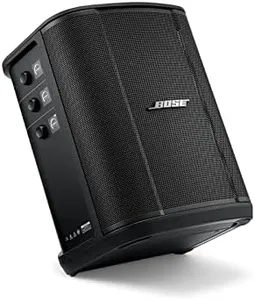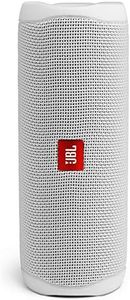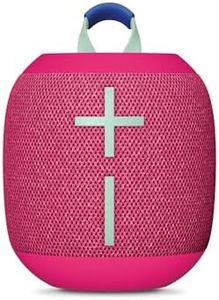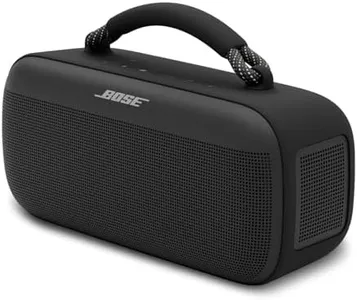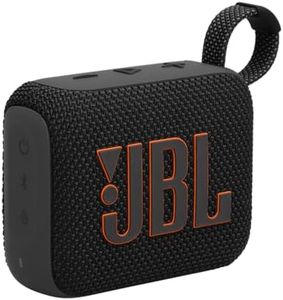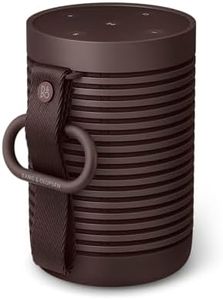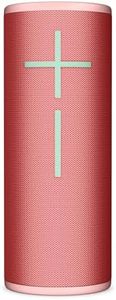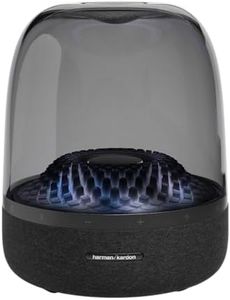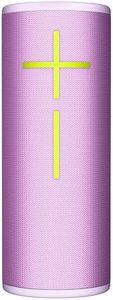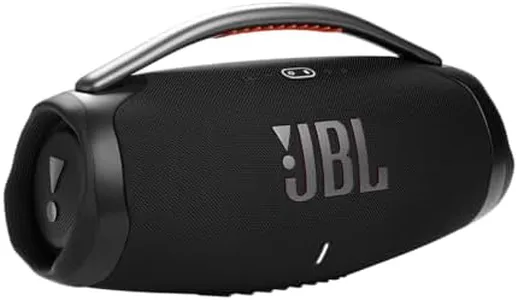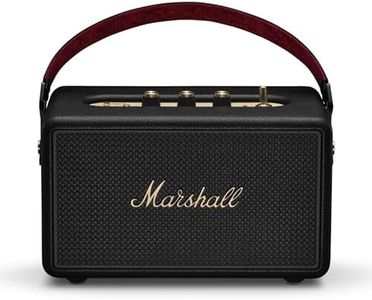We Use CookiesWe use cookies to enhance the security, performance,
functionality and for analytical and promotional activities. By continuing to browse this site you
are agreeing to our privacy policy
10 Best Portable Speakers
From leading brands and best sellers available on the web.By clicking on a link to a third party's website, log data is shared with that third party.
Buying Guide for the Best Portable Speakers
Choosing a portable speaker can be an enjoyable experience when you know what to look for. Portable speakers come in many sizes and shapes, and the best one for you will depend on where, how long, and how you plan to use it. Before you start shopping, think about your main uses: will you be carrying it outdoors, using it at home, or bringing it to parties? The right features and specifications can greatly affect your experience, so understanding them will help you find a speaker that fits your lifestyle and listening preferences.Battery LifeBattery life tells you how long the speaker can play music without needing a recharge. This is very important if you plan to use your speaker away from power sources, like in parks or at the beach. Speakers often offer anywhere from about 4 hours of playtime for the smallest models, up to 24 hours or more for the largest ones. For quick trips or short listening sessions, a lower battery life might work, but if you want to listen to music all day or during long outings, look for a higher battery life to avoid frequent charging.
Sound QualitySound quality is about how clear, loud, and rich the music sounds from the speaker. This is usually a mix of volume level, bass, treble, and how well the speaker manages not to distort sound at high volumes. Small and very compact speakers might not have deep bass or high volume, but they are easy to carry. Medium-sized speakers strike a balance between portability and good sound, while larger speakers tend to give the best sound experience but can be less convenient to carry. Think about where you’ll use it and what type of music you enjoy—if clear vocals or deep bass matter, go for better sound, even if it means a slightly bigger device.
Water and Dust ResistanceWater and dust resistance determines how well the speaker can handle splashes, rainfall, or sandy environments. These ratings are often shown as 'IPX' numbers, where higher numbers mean better protection. Speakers with no resistance are best for indoor use, while those with basic resistance (such as IPX4) can handle light splashes or rain. For poolside, beach, or camping trips, go for higher resistance levels like IPX6 or IPX7, which can survive heavier splashes or even temporary submersion. Choose this based on how rough or outdoor your typical use will be.
Portability/SizePortability refers to how easy it is to carry the speaker with you. This usually depends on size and weight. Ultra-compact models easily fit in a pocket or small bag, making them ideal for travel or short walks, while mid-sized speakers offer a blend of better sound and manageable portability for day trips or picnics. Larger speakers are best if you don’t mind carrying a bit extra weight for improved audio. Consider your usual routine: if you want a speaker you hardly notice in your bag, look for smaller options, but if it’s mostly for backyard or car trips, size can be less important.
ConnectivityConnectivity describes how you can link your device (like a phone) to the speaker. Bluetooth is the standard for most portable speakers, and newer versions of Bluetooth can offer better range and stability. Some speakers also offer extra options like AUX inputs, memory card slots, or can form stereo pairs with another speaker. If you plan to connect more than one device or want extra features like hands-free calls, look for these additional connection types. For most users, simple Bluetooth is enough, but more flexibility can be useful for different listening situations.
Durability and Build QualityDurability is about how well the speaker can handle bumps, drops, and general wear-and-tear. If you’ll use the speaker in active, outdoor, or travel settings, a sturdy and rubberized build will last longer and resist damage. If you’re mostly keeping it at home or in careful hands, this is less critical. Pick a design that matches the places and activities you expect.
